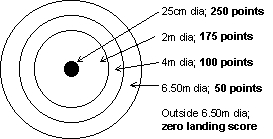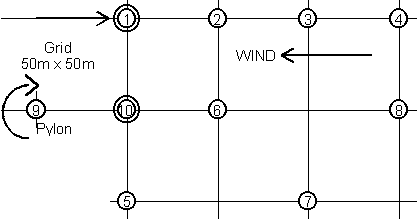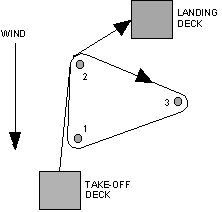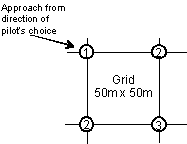
European Microlight Championships 2000
Classic Classes
Reply to complaint about weight (4 Sep 00)
![]()
Task 1-2 Brief (4 Sep 00)
![]()
Task 1-2 Scores FSC (8 Sep 00)
![]()
Task 1-2 Scores FTS (8 Sep 00)
![]()
Task 1-2 Scores GYRO (8 Sep 00)
![]()
Task 1-2 Scores WSC (8 Sep 00)
![]()
Task 1-2 Scores WTS (8 Sep 00)
![]()
Task 2 Brief (4 Sep 00)
![]()
Task 3 Brief (4 Sep 00)
![]()
Task 3 Scores FSC (8 Sep 00)
![]()
Task 3 Scores FTS (8 Sep 00)
![]()
Task 3 Scores GYRO (8 Sep 00)
![]()
Task 3 Scores WSC (8 Sep 00)
![]()
Task 3 Scores WTS (8 Sep 00)
![]()
Task 4 Brief (4 Sep 00)
![]()
Task 4 Scores FSC (8 Sep 00)
![]()
Task 4 Scores FTS (8 Sep 00)
![]()
Task 4 Scores GYRO (8 Sep 00)
![]()
Task 4 Scores WSC (13 Oct 00)
![]()
Task 4 Scores WTS (13 Oct 00)
![]()
Task 5 Brief (4 Sep 00)
![]()
Task 5 Scores FSC (8 Sep 00)
![]()
Task 5 Scores FTS (8 Sep 00)
![]()
Task 5 Scores GYRO (8 Sep 00)
![]()
Task 5 Scores WSC (8 Sep 00)
![]()
Task 5 Scores WTS (8 Sep 00)
![]()
Totals FSC (8 Sep 00)
![]()
Totals FTS (8 Sep 00)
![]()
Totals Gyro (8 Sep 00)
![]()
Totals Team (8 Sep 00)
![]()
Totals WSC (8 Sep 00)
![]()
Totals WTS (8 Sep 00)
![]()
General Info
Classic Classes Task Catalogue (4 Sep 00)
![]()
Introduction (12 Jan 01)
![]()
Local regulations V4 (4 Sep 00)
![]()
PPG Task Catalogue (4 Sep 00)
![]()
Site Location (9 Jun 00)
![]()
MS Word files
Classic Classes Task Catalogue.doc(46k) (7 Jun 00)
![]()
Local regulations V4.doc(68k) (7 Jun 00)
![]()
PPG Task Catalogue.doc(202k) (7 Jun 00)
![]()
PPG
Entries (4 Sep 00)
![]()
RMH Conclusion a personal view (12 Jan 01)
![]()
Task 1 Scores (4 Sep 00)
![]()
Task 10 Brief (4 Sep 00)
![]()
Task 10 Scores (4 Sep 00)
![]()
Task 10 Summary (4 Sep 00)
![]()
Task 11 Brief (4 Sep 00)
![]()
Task 11 Scores (4 Sep 00)
![]()
Task 11 Summary (4 Sep 00)
![]()
Task 12 Brief (4 Sep 00)
![]()
Task 12 Summary (12 Jan 01)
![]()
Task 2 Scores (4 Sep 00)
![]()
Task 3 Brief (4 Sep 00)
![]()
Task 3 Cancelled (4 Sep 00)
![]()
Task 3 Summary (4 Sep 00)
![]()
Task 4 Brief (4 Sep 00)
![]()
Task 4 Scores (4 Sep 00)
![]()
Task 4 Summary (4 Sep 00)
![]()
Task 5 Brief (4 Sep 00)
![]()
Task 5 Scores (4 Sep 00)
![]()
Task 5 Summary (4 Sep 00)
![]()
Task 6 Brief (4 Sep 00)
![]()
Task 6 Cancelled (4 Sep 00)
![]()
Task 6 Summary (4 Sep 00)
![]()
Task 7 Brief (4 Sep 00)
![]()
Task 7 Scores (4 Sep 00)
![]()
Task 7 Summary (4 Sep 00)
![]()
Task 8 Brief (4 Sep 00)
![]()
Task 8 Scores (4 Sep 00)
![]()
Task 8 Summary (4 Sep 00)
![]()
Task 9 Brief (4 Sep 00)
![]()
Task 9 Scores (4 Sep 00)
![]()
Task 9 Summary (4 Sep 00)
![]()
Tasks 1-2 Brief (4 Sep 00)
![]()
Tasks 1-2 Summary (4 Sep 00)
![]()
Totals PPG team (4 Sep 00)
![]()
Totals PPG (4 Sep 00)
![]()
Contact RMH
General Info: PPG Task Catalogue
Updated 4 Sep 2000
CATALOGUE OF TASKS FOR PPGs
1.PRECISION TAKE-OFF AND LANDING PRECISION
Objective
To make a clean take off at the first attempt in the deck, and subsequently land as near as possible to a point.
Description
The pilot is permitted four takeoff attempts, climbs to 500ft overhead the target, cuts the engine before passing through a gate and tries to make a first touch as near as possible to the centre of a target consisting of a series of concentric circles.
Special rules
The pilot scores 250 points for a clean take off at the first attempt, 170 for the second, 90 for the third, zero for the fourth.
The circuit to be flown will be detailed at briefing.
The first touch of the ground by the pilot’s foot is the point from which the pilot’s score will be derived. A first touch on the line scores the higher score.
Contestants will be awarded a zero score for:
· The pilot or any part of the aircraft touching the ground outside the deck while undertaking the task.
Contestants will be awarded a zero landing score for:
·
 Engine not stopped before the gate.
Engine not stopped before the gate.
· Gate not passed correctly.
· Falling over as a result of the landing.
Scoring
Pilot score = (Bto + Bld)
Where:
Bto = Takeoff points, Bld = Landing points
2. PRECISION CIRCUIT IN THE SHORTEST TIME PRECISION
Objective
To strike a number of targets laid out in a given order in the shortest possible time and return to the deck.
 Description
Description
8 targets 2m in height are laid out 50M apart in two arrays. The first array has 4 targets in a straight line, the second array has 4 targets in a slalom.
A further target is placed 50M behind target 10 to serve as a pylon which must be flown round (by the body of the pilot) before target 10 is struck.
Special rules
A valid strike on a target is one where the pilot or any part of the FLM has been clearly observed to touch it.
To count as a strike, target No. 9, the pylon, must be rounded in a CLOCKWISE direction(.canceled)
A strike on target 1 starts the clock, a strike on target 10 stops the clock.
Pilots may have only one attempt at striking each target except for the first and last targets where three attempts at each are permitted.
Failure to strike the first or last target or touch the ground at any point between them: score zero.
Scoring
![]()
Pilot Score = ![]()
Where:
NQ = The number of targets struck by the pilot Sp = The pilot's elapsed time in seconds between striking target 1 and target 10
3. SLOW / FAST SPEED PRECISION
Objective
To fly a course as fast as possible and then return along the course as slow as possible.
Description
A straight course between 250m and 500m long and 25m wide is laid out with gates at each end.
The pilot makes a timed pass along the course as fast as possible, returns to the start, and makes a second timed pass in the same direction as slow as possible.
Special rules
For each leg, the clock starts the moment the pilot passes the first gate and stops the moment he passes the second.
If the pilot or any part of his PPG touches the ground during the first leg: VP1 = zero and EP = zero
If the pilot or any part of his PPG touches the ground during the second leg: VP2 = zero and EP = zero
If the pilot zigzags or if the body of the pilot overflies a side of the course or exceeds 2m above ground: Score zero.
The maximum time allowed for a pilot to complete each leg of the course is 5 minutes.
Pilot score = ![]()
Where:
Vmax = The highest speed achieved in the task, in Km/H
Vp1 = The speed of the pilot in Km/H in the first leg of the task
Vmin = The lowest speed achieved in the task, in Km/H
Vp2 = The speed of the pilot in Km/H in the second leg of the task
Ep = The difference between the pilot's slowest and fastest speeds, in Km/H
Emax = The maximum difference between slowest and fastest speeds, in Km/H
4. PURE ECONOMY ECONOMY
Objective
Take-off with a measured quantity of fuel and stay airborne for as long as possible and return to the deck.
Special rules
Free take-off within the time window.
Departure from view of the marshals or egress from the permitted flight area will incur penalties.
Land outside the airfield boundary: Score zero. Land inside the airfield boundary but outside the deck: 20% penalty.
Scoring
Pilot score
= ![]()
Where:
Tp = The pilot's time,
Tmax = The longest time taken to complete the task
5. ECONOMY & DISTANCE ECONOMY
|
|
Objective
To take off from the deck with a given quantity of fuel, fly as many laps as possible around a course not exceeding 1Km in length and land on another deck.
 Special
rules
Special
rules
Pilots must not exceed 200ft height at any time, or 30ft whilst rounding pylons.
Exceeding the height limitations or failure to round a pylon does not score that lap.
If the pilot or any part of his PPG touches the ground during the task and takes off again, score zero.
Failure to land in the landing deck: 20% penalty.
Scoring
Pilot score
= ![]()
Where:
Lp = The number of whole laps completed by the pilot
Lmax = The maximum number of whole laps achieved in the task.
6. ECONOMY & NAVIGATIONECONOMY
Objective
To take off with a given quantity of fuel and locate an unknown number of markers within defined sectors and return to the deck.
Description
Each sector will contain a given IP (initial point) and a FP (finishing point) which may be a turn point, marker or gate. The pilot flies a given track between the IP and FP. An unknown number of markers may be distributed along the track.
Special rules
Outlanding: Score zero.
Scoring
Pilot score
= ![]()
Where:
NBp = The number of ground markers and/or turn points a pilot collects in the task
NBmax = The maximum number of markers and/or turn points collected in the task
7. ECONOMY & PRECISION ECONOMY
Objective
To make a clean take-off in the time window with a given quantity of fuel, stay airborne as long as possible within a defined area and land on landing markers situated within the deck before the end of the time window.
Special rules
The pilot scores 300 bonus points for a clean take off at the first attempt, 200 for the second, 100 for the third, zero for any attempts thereafter.
Departure from view of the marshals or egress from the permitted flight area will incur penalties.
When landing, If the pilot elects to switch off his engine at least 5m above a marker and:
· Makes a first touch on the marker: Landing bonus: 200 points
If the pilot elects to not switch off his engine and:
· Makes a first touch on the marker: Landing bonus: 50 points
If the pilot falls over as a result of the landing: zero landing bonus.
If the pilot obstructs another competitor attempting to land at a landing marker penalties will apply.
Scoring
Pilot
score = ![]()
Where:
TP = The pilot's time
Tmax = The longest time taken to complete the task
Bto = Takeoff bonus points
Bld = Landing bonus points
8. PURE NAVIGATION
Objective
To fly a course between as many turn points or markers as possible within the time window and return to the deck.
Scoring
Pilot score
= ![]()
Where, according to briefing; Either:
NBp = The number of ground markers and/or turn points a pilot collects in the task
NBmax = The maximum number of markers and/or turn points collected in the task
OR
NBp = the distance flown by the pilot in the task.
NBMax = the maximum distance flown in the task.
9. NAVIGATION, PRECISION & SPEED
Objective
To make a clean take-off from the deck, to fly a course between as many turn points or markers as possible within a given time, and to collect bonus points for landing at designated markers before returning to the deck.
Special rules
The clock starts the moment the marshal makes the signal to take off.
At the start, the pilot scores 300 bonus points for a clean take off at the first attempt, 200 for the second, 100 for the third, zero for any attempts thereafter.
In the case of landing markers, If the pilot elects to switch off his engine at least 5m above the marker and:
· Makes a first touch on the marker: Landing bonus: 200 points
· Misses the marker: landing bonus: 50 points
If the pilot elects to not switch off his engine and:
· Makes a first touch on the marker: Landing bonus: 100 points
If the pilot falls over as a result of a landing: zero landing bonus for that landing.
If the pilot obstructs another competitor attempting to land at a landing marker penalties will apply.
The clock stops the moment the pilot either crosses a line or lands back on the deck.
Any outside assistance: Score zero.
Scoring
Pilot score
= ![]()
Where, according to briefing; Either:
NBp = The number of ground markers and/or turn points a pilot collects in the task
NBmax = The maximum number of markers and/or turn points collected in the task
OR
NBp = the distance flown by the pilot in the task.
NBMax = the maximum distance flown in the task.
AND
Bto = Pilot’s takeoff bonus points
Bld = Pilot’s landing bonus points
BldMax = The maximum landing bonus points achieved.
10. NAVIGATION / ESTIMATED SPEED
Objective
To fly a course between any combination of turn points, markers and gates as defined at the briefing having declared estimated flight times or estimated times of arrival as required at the briefing, and return to the deck.
Special rules
The value of T, in seconds, will be given at the briefing.
Scoring
Pilot score
= ![]()
Where, according to briefing; Either:
NBp = The number of ground markers and/or turn points a pilot collects in the task
NBmax = The maximum number of markers and/or turn points collected in the task
OR
NBp = the distance flown by the pilot in the task.
NBMax = the maximum distance flown in the task.
AND
T = The total difference in between pilot’s estimated and actual times for all timed sectors. (>=300 = 300)
11. NAVIGATION / ESTIMATED SPEED / PRECISION
Objective
To fly a course between any combination of turn points, markers, landing markers and gates as defined at the briefing having declared estimated flight times as required at the briefing, and return to the deck.
Special rules
The value of T, in seconds, will be given at the briefing.
At the start, the pilot scores 150 bonus points for a clean take off at the first attempt, 100 for the second, 50 for the third, zero for any attempts thereafter.
All landing markers may be attempted with engine on unless the marker is in the landing deck and is the final element in the task.
If the pilot falls over as a result of a landing: zero landing score for that landing.
If the pilot obstructs another competitor attempting to land at a landing marker penalties will apply.
Scoring
Pilot score = ![]()
Where, according to briefing; Either:
NBp = The number of ground markers and/or turn points a pilot collects in the task
NBmax = The maximum number of markers and/or turn points collected in the task
OR
NBp = the distance flown by the pilot in the task.
NBMax = the maximum distance flown in the task.
AND
T = The total difference in between pilot’s estimated and actual times for all timed sectors. (>=250 = 250)
Bto = Pilot's takeoff score
Bld = Pilot’s landing points
BldMax = The maximum number of landing points achieved in the task.
12. SPEED TRIANGLE AND OUT AND RETURN ECONOMY
Objective
With limited fuel, to fly around a circuit in the shortest possible time, return to the deck, and then, with the pilots remaining fuel fly in a given direction as far as possible and return to the deck.
Description
Fuel quantity allowed: (Suggested: 6 litres)
Part 1: Speed; The pilot take off time is noted. The pilot flies to one or more turnpoints and returns to the deck where he is timed.
Part 2: Distance; The pilot then flies in a given direction to a point of pilot choice, photographs it, and returns to the deck.
Special rules
· Land out before completing part 1: Score zero.
· Land out before completing part 2: Score zero for part 2.
· IMPORTANT: The point the pilot photographs as his point of greatest distance in part 2 MUST be clearly and unequivocally interpretable onto the official map. It is recommended the pilot takes several views of the point to confirm his position in relation to surrounding features and also takes back-up photos of earlier points along his route.
· Failure to takeoff or land entirely in the deck: 20% penalty.
Scoring
Pilot score = ![]()
Where:
tp = the pilot’s time,
Tmin = The best time (Part 1)
dp = the pilot’s distance
dMax = the greatest distance (Part 2)
13. THE FOUR STICKS
 Objective
Objective
|
|
This task is intended as a small break task between elements of an overall task.
There are 4 standard kicking sticks set at the corners of a 50m x 50m square. The pilot must kick 3 of the 4 sticks. The first stick the pilot kicks may be any of the 4 sticks. The third stick the pilot kicks must be diagonally opposite the first, the second stick may be either of the two other sticks.
Special rules
· If this task is used to take a time for the purposes of an element of the overall task then the time shall be taken the moment the pilot strikes the first stick.
· The pilot may have as many attempts as necessary at striking the first stick.
· Only ONE attempt is allowed at kicking both the second and third sticks.
· There shall be one group of 4 sticks for every 15 competitors in the task.
· On approach to the task, pilots should choose a “free” group of sticks, however if, in the opinion of the marshals on duty a conflict with another aircraft existed (depending on the overall task, for example if there is a timing involved) both should kick only one stick and then depart on the rest of the overall task. Both pilots will then be given the opportunity to have ONE further attempt at this task as soon as possible after the end of the overall task.
Scoring
The scoring should be integrated into the overall task as NQ. If the pilot fails to kick either the second or third stick then for each stick then the penalty shall be no more than 5% of the overall task score.
14. NOISE IN CLIMB NOISE
Objective
From a stationary position on the ground in front of a line and using a fixed throttle (and propeller pitch) setting of pilot choice, the pilot takes off and climbs in a straight line over a microphone set 300m distant from the line. The max noise in dBA of the aircraft is measured.
Special rules
Weaving, failure to fly directly over the microphone, changing throttle or propeller pitch setting: Zero score.
Scoring
Pilot score = ![]()
Where:
nMin = The minimum noise in dBA achieved in the class
nP = The noise achieved by the pilot in dBA
15. MINIMUM NOISE IN LEVEL FLIGHT NOISE
Objective
To fly two legs of a course in opposite directions as quietly as possible.
Description
The course is between two points 300m apart and must be flown in a straight line at a height of 25ft (± 10ft). at a pilot selected constant throttle and propeller pitch setting. The microphone is positioned 100m offset from the centreline and equidistant from the two points.
Special rules
Weaving, changing height, throttle or propeller pitch setting whilst in the course: Zero score for that run.
Scoring
Pilot score = ![]()
Where:
nMin1 and nMin2 = The minimum noise in dBA achieved on each run in the class
nP1 and nP2 = The noise achieved by the pilot in dBA on each run